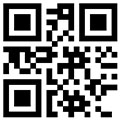- Time: 2024/6/15 Posted: Xinyida (Shenzhen) Electronic Technology Co., Ltd
Due to the increasingly high functional requirements of products, ordinary single panels can no longer meet the functional requirements. At this historic moment, double-sided printed circuit boards have emerged, which means that both sides of the circuit board have wires. The typical process for manufacturing double-sided perforated printed boards in fields such as communication electronic equipment, advanced instruments, high-performance electronic computers, etc. is the bare copper cladding mask process (SMOBC). The process is as follows:
Double sided copper clad plate cutting - CNC drilling inspection, deburring, brush chemical plating (through hole metalization) - (thin copper full plate electroplating) - Screen printing negative electrode circuit pattern inspection and cleaning, Curing (dry film or wet film) film, exposure, development) - Inspection and repair of circuit patterns - Electroplating tin (anti-corrosion nickel/gold) - Removal of printed matter (photosensitive film) - Etching copper - (tin removal) Cleaning brush with one layer of heat cured green oil screen printing solder mask pattern (photosensitive dry film or wet film, exposure, development, heat curing, ordinary photosensitive heat) Curing and oil recording Curing - (tin spraying or organic solder mask) - Shape treatment, cleaning, drying. Power switch testing, packaging inspection, and finished product shipment.
Assembled finished PCBA processed products
1、 Prepare materials, equipment, and tools required for circuit board assembly
1. One DC stabilized power supply and one multimeter;
2. Solder circuit board;
3. List of kits and casings for the products to be assembled, as well as relevant accessories for the machine;
4. Electric screwdriver, cloth, electronic label (product identification code);
2、 Pre assembly inspection
1. Detailed inspection of the list to be assembled and circuit board inspection
2. Inspect the product casing
3. Check if there are any defects or damage to the product kit casing.
4. Check the printed circuit board. Visually inspect whether the printed circuit board is intact, whether the surface solder coating is intact, and whether there are obvious short circuits and short circuit defects. Use a multimeter to check for a short circuit between the power supply and ground on the printed circuit board.
3、 Final assembly and shipment
1. The board with BGA and IC should use heat dissipation glue and anti-collision pads;
2. Align the printed boards and place them in the casing. Align the screw holes and be careful not to let floating resistors or other parts collide with the casing;
3. Install the screws that secure the printed circuit board, cover the outer shell, and tighten the assembly screws;
4. Inspect the appearance for any damage or other visual defects;
5. Attach product labels;
6. Transfer to the backend, such as aging testing;
The entire PCBA assembly process is roughly as follows. If there are special process requirements, improvements can be made according to DFM related technical requirements
The above is the explanation given by the editor of PCB circuit board company.
If you want to learn more about PCBA, you can visit our company's homepage to learn more.
In addition, our company also sells various circuit boards, high-frequency circuit boards, SMT chips, etc., waiting for your next visit.

